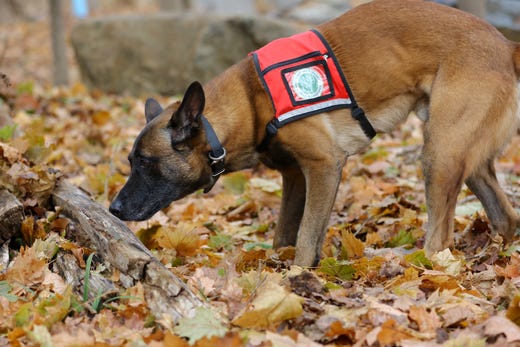
Dia, a caramel-colored Labrador, is ecstatic.
It’s a chilly day in a Ramapo Valley forest in Mahwah, and Dia, clad in a red vest, is ready to work. Joshua Beese, her handler, wraps his arms around her neck.
When Beese unclips a leash from Dia’s collar, she’s the picture of pure doggy joy: She takes off, tail wagging, eyes bright, searching frantically for the scent.

Suddenly, Dia homes in on a fallen tree and sits, looking at Beese expectantly.
“Show me,” Beese says. Dia noses dead leaves off the trunk, revealing a hidden Mason jar containing the larvae of spotted lanternfly, an insect from Asia that is killing trees and other vegetation in the Northeast.
“Yes!” Beese shouts.
Dia leaps into the air, bouncing off Beese’s chest. She rips down the forest trail and through piles of leaves in pursuit of her reward: a ball.
Dia learned to search for spotted lanternflies in August, mastering the scent in about a week. She’s just 2 years old, meaning her prime working years are still to come.
For her, the search is a game. For Beese, it’s far more serious: Spotted lanternflies are an invasive species, and Dia’s discriminating nose is an innovative way to find and eradicate them.
Conservation canines
She is one of two working canines who are part of the New York-New Jersey Trail Conference’s Conservation Dogs Program, which began last year as a facet of the conference’s invasive species work.
Dia and her counterpart, Fagen, are the first East Coast pups devoted solely to sniffing out invasive species. The dogs can learn up to three scents annually.
And unlike other programs, which contract dogs to work in various areas, Dia and Fagen will work only in New Jersey and New York, said Linda Rohleder, land stewardship director for the trail conference.
Fagen, a Belgian Malinois, has a different background. He’s a disaster search dog, trained to find people buried alive when catastrophe strikes.
These days, he’s enjoying a new project.
“I was looking for more things to do with dogs,” said Beese, Fagen’s longtime handler. The duo conducted searches for the Federal Emergency Management Agency and New Jersey Task Force One before Beese took the helm of the trail conference program.
Dia and Fagen live with Beese, but they’re not pets. It takes a special kind of canine — one with excessive energy and a fervent interest in toys — to become a working dog.
“They say you can end up looking at 1,000 dogs before you find a dog that’s suitable for this type of work,” Beese said.
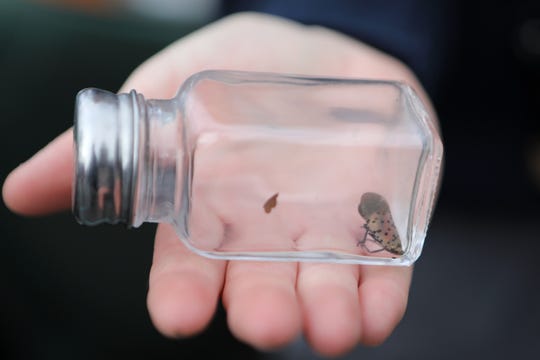
That’s the case for Arden Blumenthal, Beese’s assistant, who’s searching for a detection dog of her own. She hopes to rescue a dog in the coming months, one that “maybe no one wants because they’re bouncing off the walls” and is “obsessed with playing fetch.”
“Some dogs just aren’t cut out for the thing that we’re doing,” Blumenthal said. “We don’t want dogs that are going to be pausing mid-search to go sniff out a bunny rabbit.”
The expectations are high. The dogs train with invasive species contained in Mason jars or salt shakers. But handlers sometimes fake them out with empty containers to ensure that the dogs are tracking the invasive species scent, not the smell of the jars.
The dogs can even differentiate between scents. Ultimately, they’ll learn to search for more than one invasive species at a time, Beese said.
The dogs’ noses aren’t foolproof, though. Harsh winds can throw off the scent, causing dogs to target bushes near a pest’s location, Beese said.
Even then, the pups still speed up the process.
“People can only have so much ability and vision,” Rohleder said. “Dogs, they have the capability of smell, so they add another tool to our toolbox.”
Pretty pests
Spotted lanternflies are colorful insects with ladybug-like wings. But don’t be fooled: They’re invasive pests, not bugs to be admired.
Anyone who makes apple pie for the holidays — or drinks beer or wine — does so despite spotted lanternflies, which threaten apples, hops and grapes, among 70 other plants.
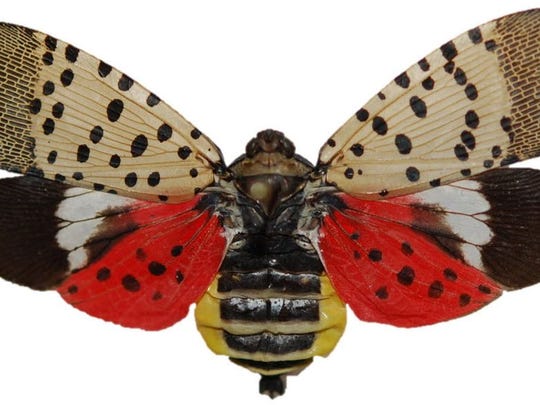
“It’s a major threat,” Rohleder said.
The spotted lanternfly is native to China, Vietnam and India. It was first detected in Pennsylvania five years ago. In recent weeks, the flies have been crowding the sidewalks of Philadelphia.
The pest has spread across the eastern part of the state and into New Jersey, New York, Delaware and the tips of Virginia, Maryland and Connecticut, according to the New York State Integrated Pest Management Program.
But U.S. Department of Agriculture scientists warned in October of the pest’s widespread establishment, publishing a map showing that most of the eastern U.S., along with portions of Pacific states, is possible spotted lanternfly habitat.
Adult lanternflies congregate on trees, swarm in the air and coat outdoor structures in honeydew, the sugary substance they excrete when feeding, according to the Pennsylvania Department of Agriculture.
The tree of heaven, an invasive plant also native to China, is a critical factor for spotted lanternfly populations, which rely on it as a host.
The fast-growing tree species features smooth bark, an ideal habitat for spotted lanternfly egg masses, which look like smeared putty.
The masses are particularly tough to find — and contain 30 to 50 eggs, Blumenthal said.
As winter approaches and adult lanternflies die off, the egg masses will appear. Beese and his team hope to find as many as they can during the next six or seven months, before the eggs hatch.
The team also works with government agencies to develop ways to treat the masses when they’re discovered, preventing proliferation.
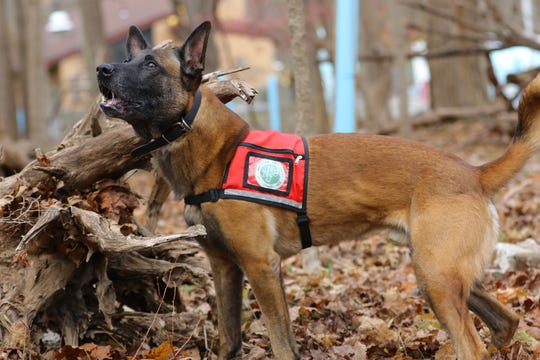
“The conservation dog program is designed to help us with early detection,” Rohleder said. “We can get to the point where the population is eradicated sooner.”
Though they are poor fliers, spotted lanternfly populations are mobile. They can attach to nearly any smooth surface, including vehicles: “People are transporting them without even knowing,” Blumenthal said.
Experts warn that this could precipitate the species’ spread.
“We sort of view ourselves as a gateway to the rest of the U.S.,” Rohleder said, adding that the conservation programs can “be a firewall for the rest of the area.”
That’s where the dogs come in. Dia and Fagen spent time at New York truck inspection stations last month, randomly screening big rigs for lanternfly contamination.
When Beese and Fagen demonstrate a car search, Fagen wears booties on his front paws so he doesn’t scratch the paint.
Fagen shoves his nose under the license plate. When he backs away, his hips tremble slightly. He barks but doesn’t sit, yet.
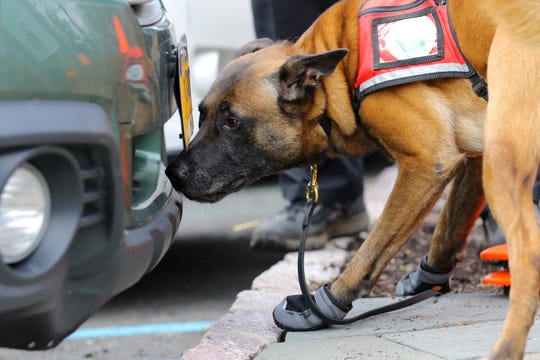
“When he finds a live person, he barks,” Rohleder said. “We had to teach him a different indication.”
Fagen finally sits and earns his ball. But even while playing, he never ventures far from his handler.
“He wants to interact with the handler,” Rohleder said, watching Beese and Fagen engage in a tug-of-war game. “That’s a big part of the training.”
The conservation dogs initiative is in its infancy, but its leaders have high hopes. They plan to grow the program as volunteers, dogs and funding allow.
“We’re learning a lot as we go,” Beese said. “We’re really at the frontier of this kind of conservation work.”

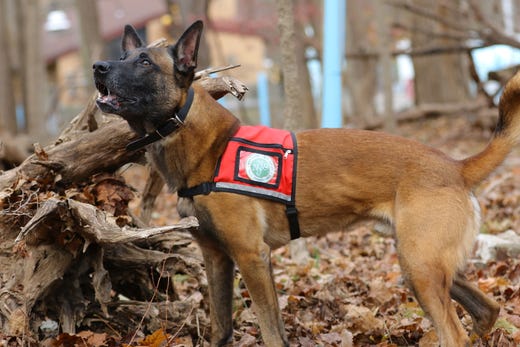
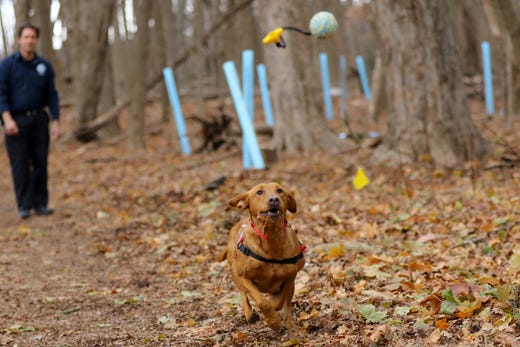
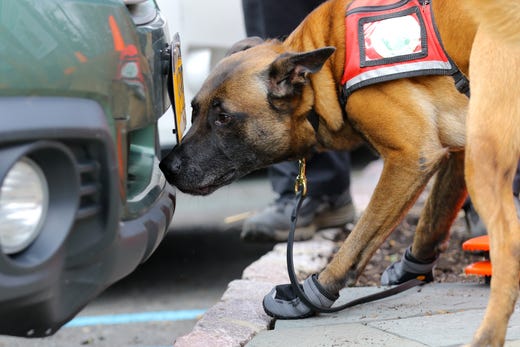
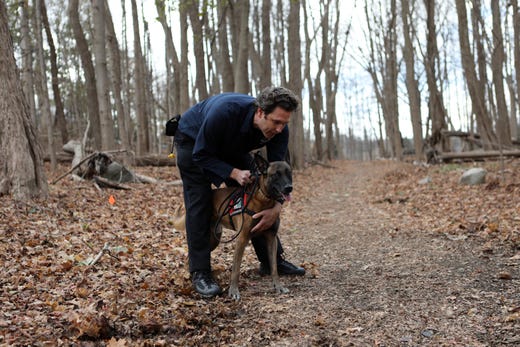
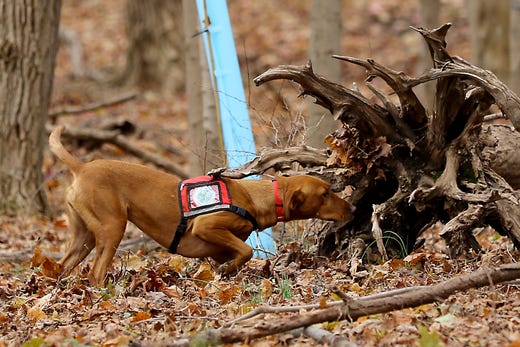

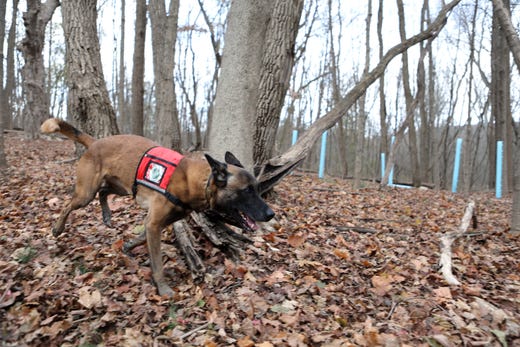
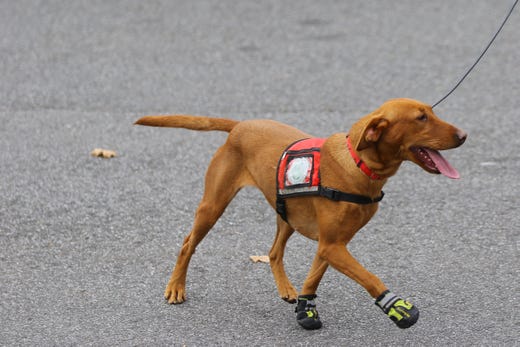
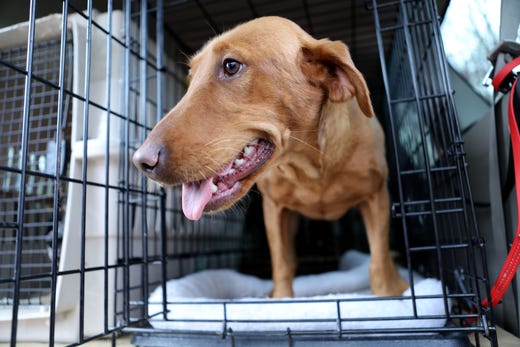
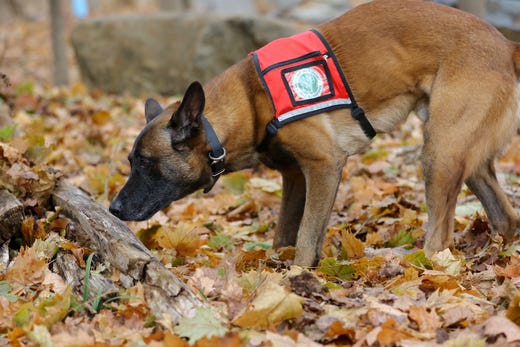
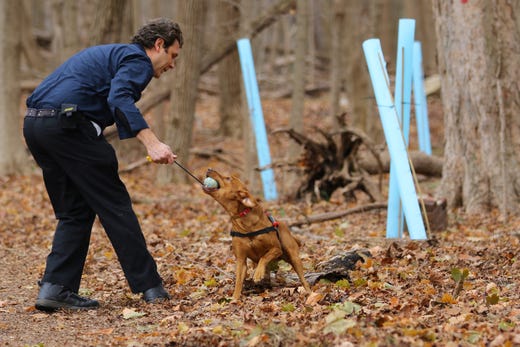
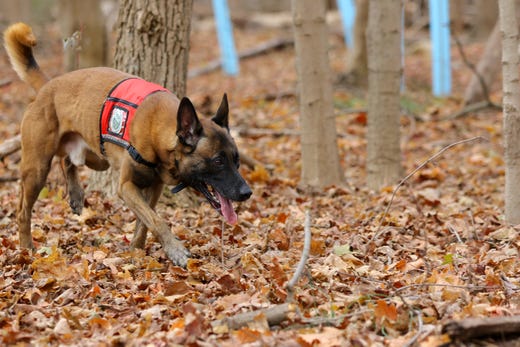
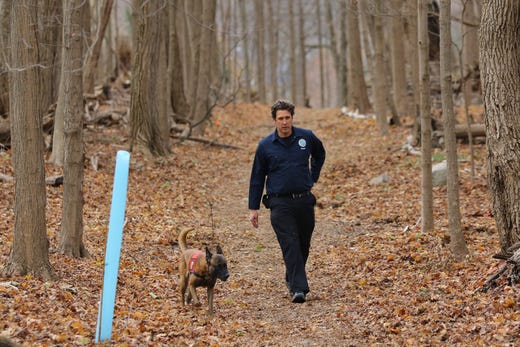
The original reporting includes a slideshow, video and text. Click here to view the original presentation (paywall).
This story was produced in collaboration with the New Jersey Sustainability Reporting Hub project. It was originally reported by Alexis Shanes for northjersey.com, and may be re-distributed through the Creative Commons License, with attribution.
